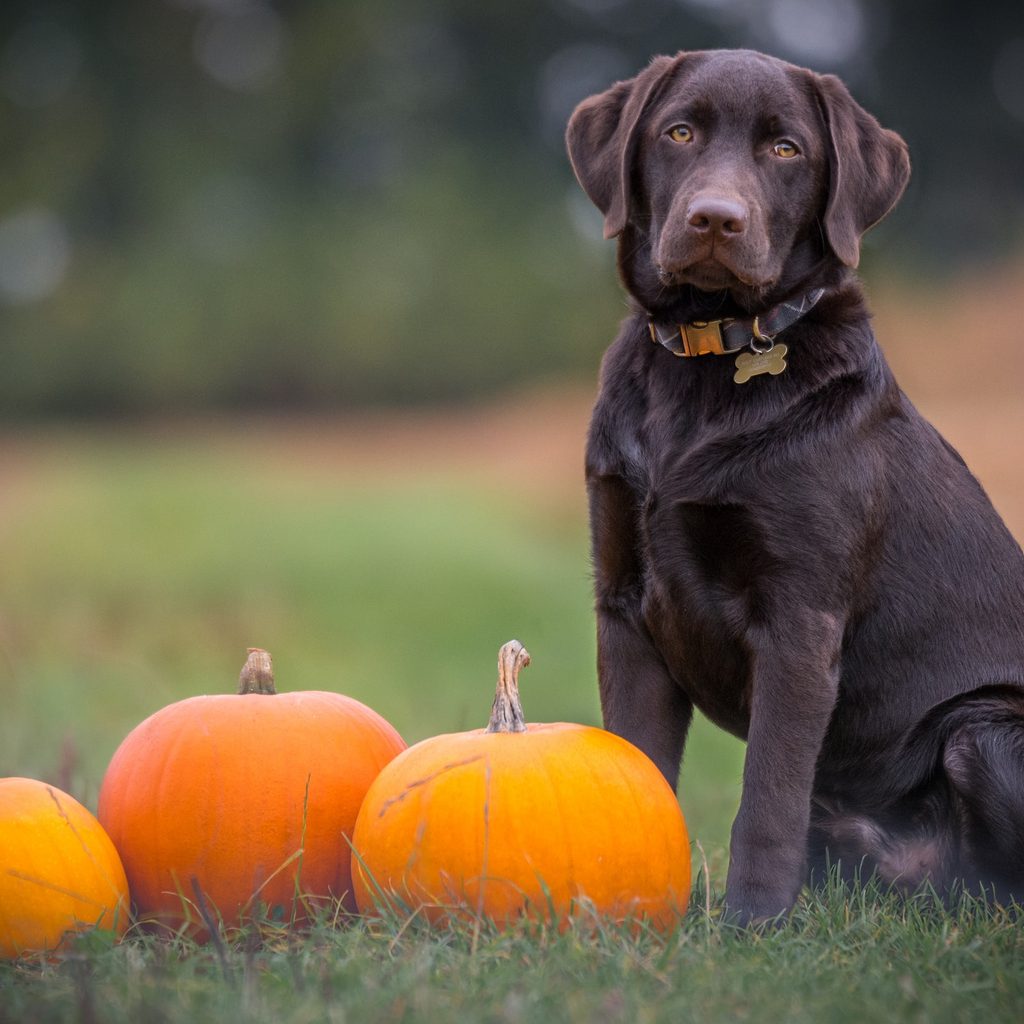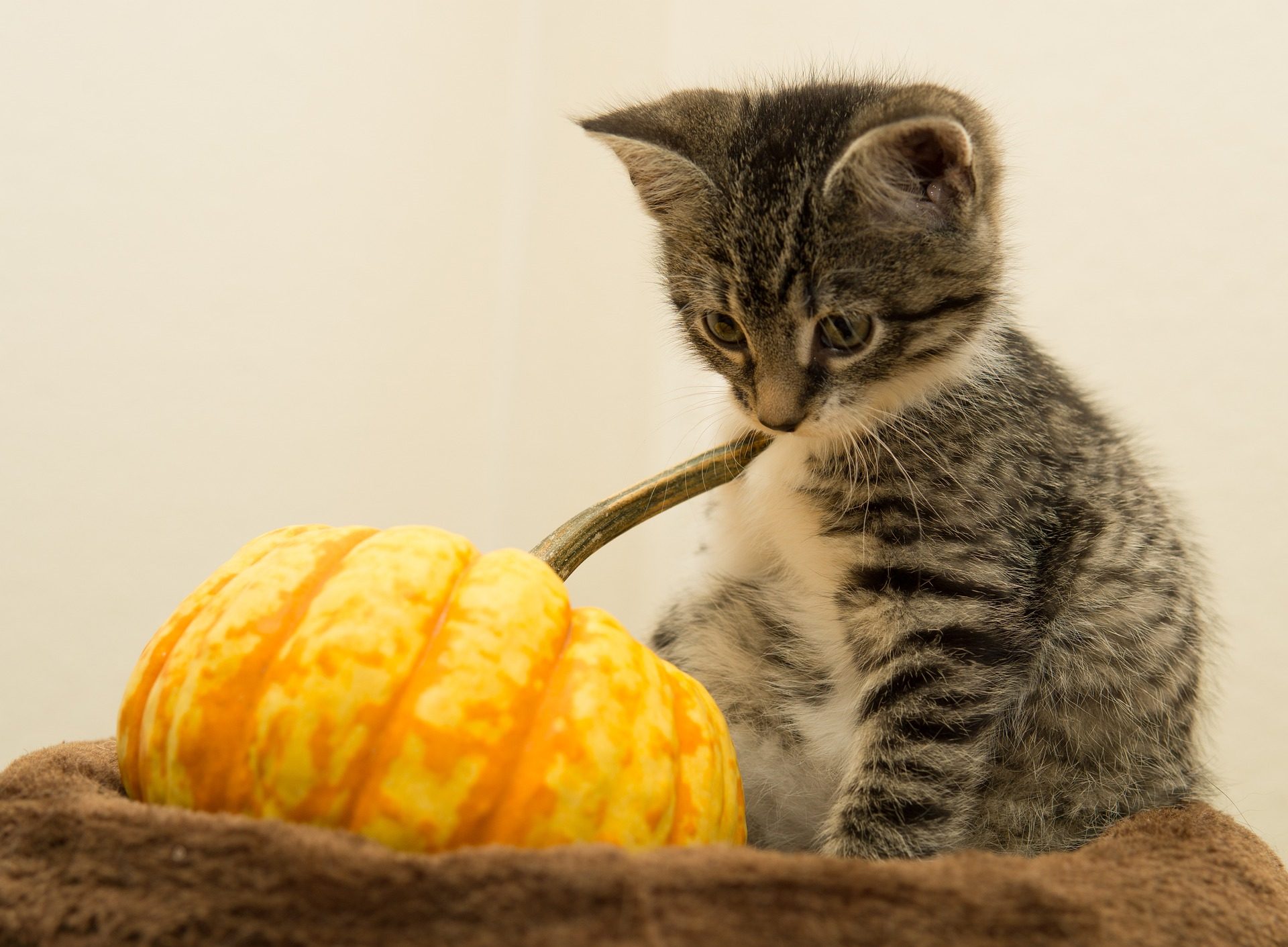It’s Halloween! The house looks suitably haunted, everyone’s running around in their costume, and the candy bowl’s waiting at the front door. You’ve checked everything off your list. Until you notice your dog sniffing around the candy bowl and your cat swatting a candle on the table. Everyone loves this autumn holiday, but it’s also important to keep these Halloween safety tips for pets in the back of your mind.
Halloween tricks NOT treats

You know you need to check through your children’s candy bags. But what about securing Halloween treats out of the reach of cats and dogs? While safe for kids’ tummies (in moderation), the following familiar Halloween treats pose hazards to your pets:
- Chocolate (the darker, the worse it gets)
- Sugar-free treats (they contain Xylitol)
- Candy wrappers
Keep all of the candy out of the reach of curious noses and paws. Make sure you have a quick chat with your kiddos about the importance of NOT sharing their Halloween haul with their four-legged friends, too.
If you suspect a pet’s ingested some Halloween candy, get in touch with the ASPCA Pet Poison Control Center (1-888-426-4435). Providing the type of treat, amount, and the weight of your pet will allow them to determine whether you need to seek further veterinary care.
Haunted houses
Half the fun of Halloween is setting up all of your favorite decorations. Some of that decor can present concerns for your pets, though. Even items rated as non-toxic have the potential to lead to a miserable evening for your cat or dog. In the interest of keeping everyone happy and safe, run a critical eye over your decorations before you set them out.
- Candles: Flickering flames are too much for some cats to resist. If they’re crucial to your theme, try to find battery-operated alternatives.
- Corncobs: Dried corncobs scream “fall.” When ingested, though, they scream “foreign body.” Keep them out of reach.
- Fake spiders: Your cat is your champion at pest control. They don’t know those spiders are fake, and they end up entangled in the artificial web.
- Glowsticks: The liquid inside of a glowstick isn’t toxic, but it tastes terrible! You don’t want your poor cat or dog drooling in the corner.
- Pumpkin: Pumpkin doesn’t bother cats or dogs. You might even add it to their food now and then. But a carved pumpkin that’s been sitting on the porch for a while? It’s starting to mold You don’t want anyone chewing on that.
Be smart about your decoration choices and placement. Keep items out of the reach of your pets. Or, better yet, swap out your usual decor for pet-friendly options. There are several reasons why cats love cardboard boxes so much, which is why it’d be a good idea to create a haunted house out of it for your cat to enjoy. Use paper to make your spiderwebs. They may not look the same, but it’ll ensure your pet’s safety.
Ghouls and goblins

Your pets know all of the neighborhood kids. Your dog visits with everyone on their regular walks. Your cat sees the children walking to and from school each day. Except on Halloween. Halloween night, the kids look and smell different. They’re wearing costumes and makeup. That’s frightening for your pets.
Set up a separate room for your pets where they’ll feel safe. You don’t want your feline and canine companions to get stressed. Also consider the dog crate’s location at home, and make sure it is positioned in a stress-free, comforting environment. Your dog may feel safest in it, or a pen they know belongs to them. It’s a relaxing retreat.
You may want to use Feliway for your cats. The natural pheromones promote relaxation.
If your dog gets nervous with people coming to the door, Premium Care Calming Treats for Dogs can help ease that anxiety.
Rather than heightening your pets’ panic with knocking and ringing doorbells, consider sitting outside to hand out your Halloween treats. Give your pets their favorite toys, lower the lights in their room, and set up soothing music inside. You’ll ease the stress over those scary monsters approaching the door.
“Identification, please”
It’s tempting to take your dog trick-or-treating. However, Halloween safety tip for pets #4 is to keep your pets (all of your pets) safe and sound inside. Halloween’s a rough time for pets. There’s a lot of activity going on with children running around and yelling. It’s too much stimulation for most pets, and that safe nest inside is the best location. You don’t want your dog to accidentally pull loose on their leash and dive into the melee.
Make sure your pets have their current identification on their collar or harness. If they have microchips, double check that you’ve updated your information. Halloween is one of those nights when animals panic and bolt through the door. That current ID helps reassure they return home to you, safe and sound.
Happy, safe Halloween!
Halloween safety tips for pets help ensure EVERYONE has a wonderful holiday. Whether your dog and cat join in with costumes or watch a movie in the back room, you want everyone as comfortable as possible. So run a quick eye over your preparations to check for anything you might have overlooked.
Stay safe out there!
Meanwhile, if you are considering getting dog shoes for winter, read on further to learn everything you need to know about it – and whether it is necessary in the first place.


